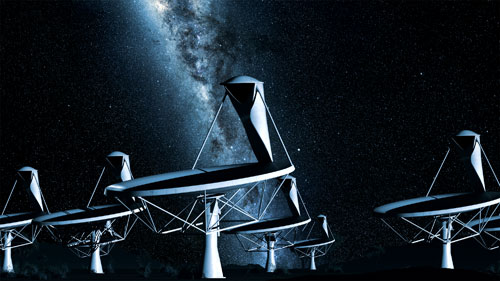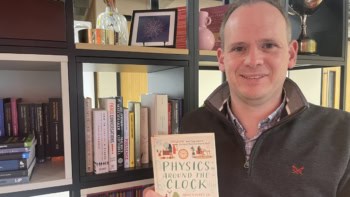
An artist’s impression of the Square Kilometre Array. (Courtesy: SKA organization/Swinburne Astronomy)
By Michael Banks
After months of political wrangling, a decision finally emerged on Friday afternoon about where the €1.5bn Square Kilometre Array (SKA) will be built.
SKA is a massive next-generation radio-astronomy facility consisting of about 2000 to 3000 linked antennas that will probe the first 100 million years after the Big Bang for clues about galaxy evolution, dark matter and dark energy.
For more than five years, two rival bids have been going head-to-head to host the telescope: one led by Australia and the other by South Africa.
On Friday at a meeting in Amsterdam, the SKA organization opted to split the project between the two hosts, with South Africa building a long-baseline high-resolution telescope and Australia constructing a lower-resolution array but one that can survey a wider field.
Yet, while all this seems like good news – and that was certainly the message from the dozens of press releases that appeared after the announcement – it does throw up some interesting questions.
So here are my five burning questions for SKA officials.
1. Why did the SKA organization not follow the recommendation by the independent SKA Site Advisory Committee that the project would best be built in South Africa?
2. If a split-site option was such a good solution in the first place, why was there not a solid case made for it from the start, thus potentially eliminating the need for a drawn-out site-selection process?
3. When SKA is fully complete, the South Africa bid will get the majority of the antennas – was this just a weak political decision to give the Australian-led bid some part of the project?
4. Is there a risk that SKA now effectively devolves into two separate and thus distinct projects?
5. How much will this decision increase the cost of the SKA project, given the need for more infrastructure to develop two sites; in a time of austerity could this hinder the overall plan?
We will be tackling these questions in detail for an in-depth report in the July issue of Physics World.
If you have any comments, e-mail pwld@iop.org.



